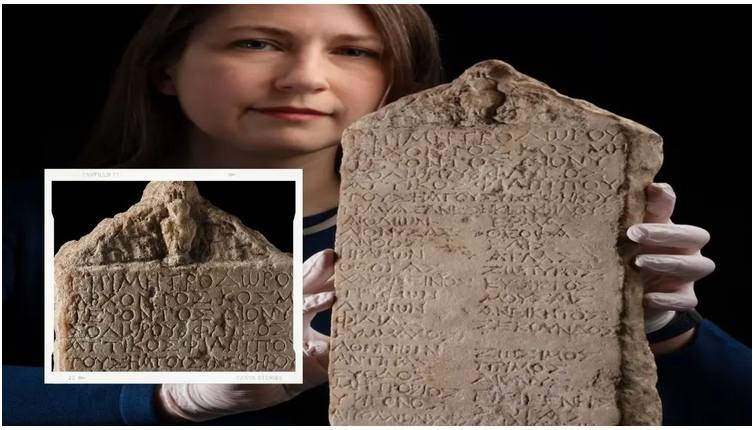! The discovery of a Greek inscription that is more than 2000 years old, turns out to be the oldest "yearbook"
Historians have discovered an ancient Greek inscription on a marble slab, in a historical collection in the National Museum of Scotland (NMS), and it was found that it bears a group of rare names that the world did not know before.
According to scientists, this stone was stored in the National Museum of Scotland for more than 100 years, and it turned out that the carved letters are nothing but the names of young men from Athens, who were entered into the Ephebate; It is a year of military and vocational training, conducted for young people who have completed the age of eighteen, in order to prepare them for life as adults.
According to the sources, this tablet lists a group of 31 friends who were together during the reign of Roman Emperor Claudius (between AD 41-54), and the excavation was intended to commemorate the close relationships of the young men in that period. It turns out to be a list of cadets for one particular year during that period, and it has given scholars new names, names not previously known in ancient Greek, and considered among the earliest evidence of non-citizen participation in the ephepas of that period.
At first, scholars suspected that this inscription was a copy of a similar list in the Ashmolean Historical Museum in Oxford, but this manuscript turned out to be incomplete, as Dr. Peter Liddell, the discovery leader, said; He is Professor of Greek History and Inscriptions at the University of Manchester:
“Because of the stone in the COVID-19 period, we were not able to travel to the museum until July 2021, and upon seeing the engravings, we realized that it was not a copy of the engraving in the Ashmolean Museum, but a completely unique new find, which had been in NMS warehouses for a very long time, since the 1980s The nineteenth century, and a group of young men who called themselves Iphips, co-workers and friends, dug in it.
The scholars explained the reason for the existence of such inscriptions, saying that they may have been made to create a feeling of camaraderie between that group of people who, who underwent a rigorous training program together, felt that they were part of one group united together.
Concerning the significance of the discovery, experts said: This discovery represents an important new source of information about the Athenian elite community in the middle of the first century AD, a crucial period for Athens, as it adapted to its position under the rule of the Roman Empire.
Scholars saw the stone as an aid in a project to publish English translations of inscriptions from ancient Athens, preserved in UK collections
https://www.arageek.com/news/ancient-slab-turns-out-to-be-2000-year-old-graduate-school-yearbook?fbclid=IwAR1f_p_-Yg8-xRZNOuoZcs8PL9A-F8uSb4p-wvqboSevTlROQHT0JnfearA


